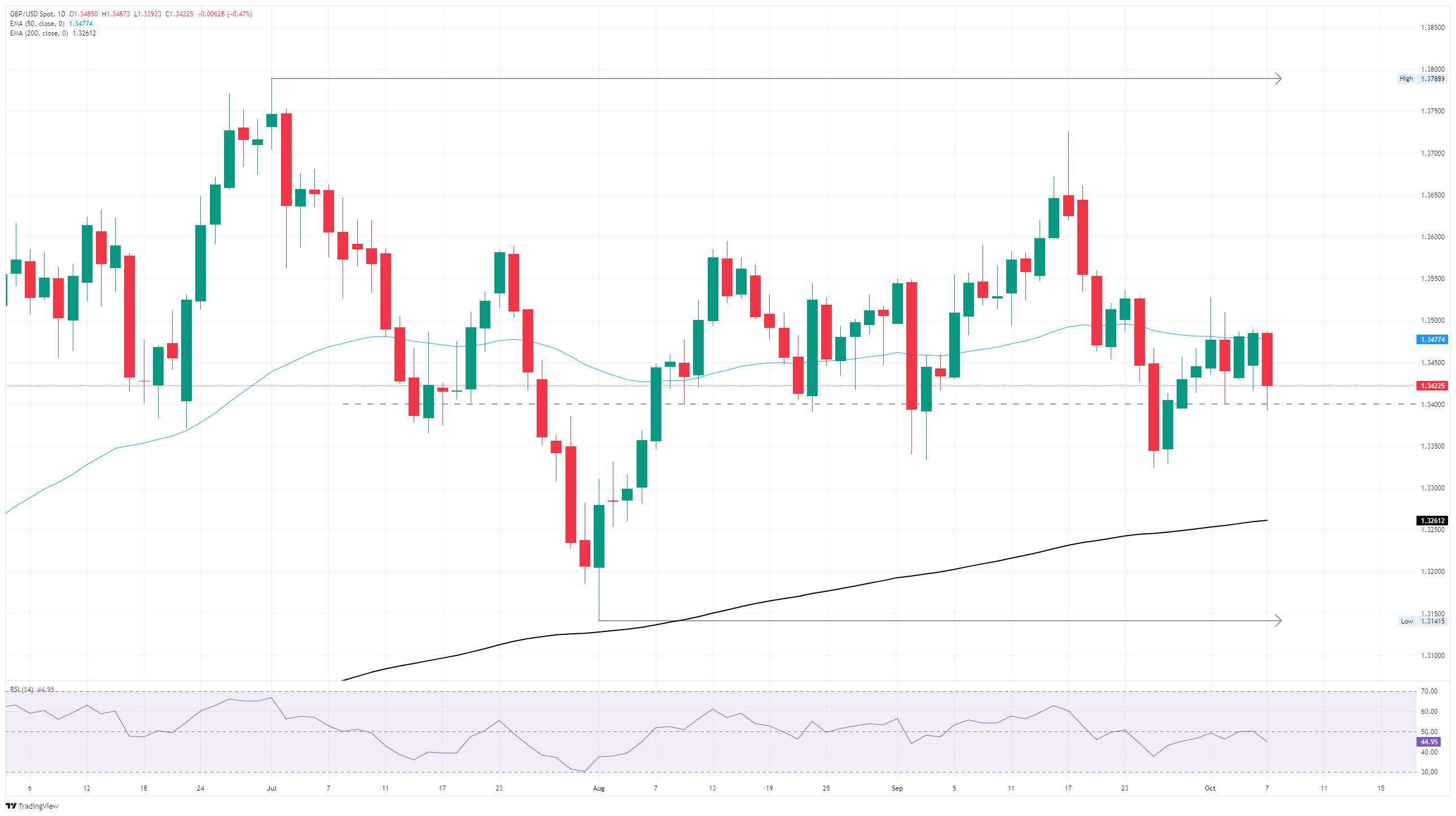GBP/USD struggles with 1.34 price floor as traders await Fed minutes
- GBP/USD knocked lower on Tuesday as momentum remains elusive.
- Cable is cycling on the low side of the 50-day EMA, keeping Pound traders on the defensive.
- A slew of central banker speeches will greet traders on Wednesday, along with the latest Fed Meeting Minutes.
GBP/USD turned lower again on Tuesday, falling back below 1.3450, extending a near-term consolidation zone as the pair grinds through chart paper near the 50-day Exponential Moving Average (EMA). Despite a notable lack of firm bullish momentum, selling pressure remains unable to crack the 1.3400 handle, keeping Cable hobbled in a volatile midrange.
Central banks and rate cut hopes to clog the pipeline on Wednesday
Central bankers will dominate headline flows on Wednesday. A raft of Federal Reserve (Fed) policymakers will be making public appearances, as well as a speech from Bank of England (BoE) Monetary Policy Committee (MPC) member Huw Pill.
Wednesday’s key event will be the release of the Fed’s latest Meeting Minutes, due at 18:00 GMT. The Fed broke the seal on interest rate cuts at its latest rate call, and investors will be looking for signs that the Federal Open Market Committee (FOMC) is tilting toward more rate cuts through the remainder of the year.
As the US government shutdown rolls on, the Federal Reserve (Fed) will be grappling with a lack of key official datasets as it makes interest rate decisions heading into the tail end of the calendar year. Barring any significant shocks in the data that remains available to the Fed, rate markets have locked in expectations of two follow-up interest rate cuts on October 29 and December 10.
GBP/USD daily chart

Pound Sterling FAQs
The Pound Sterling (GBP) is the oldest currency in the world (886 AD) and the official currency of the United Kingdom. It is the fourth most traded unit for foreign exchange (FX) in the world, accounting for 12% of all transactions, averaging $630 billion a day, according to 2022 data. Its key trading pairs are GBP/USD, also known as ‘Cable’, which accounts for 11% of FX, GBP/JPY, or the ‘Dragon’ as it is known by traders (3%), and EUR/GBP (2%). The Pound Sterling is issued by the Bank of England (BoE).
The single most important factor influencing the value of the Pound Sterling is monetary policy decided by the Bank of England. The BoE bases its decisions on whether it has achieved its primary goal of “price stability” – a steady inflation rate of around 2%. Its primary tool for achieving this is the adjustment of interest rates. When inflation is too high, the BoE will try to rein it in by raising interest rates, making it more expensive for people and businesses to access credit. This is generally positive for GBP, as higher interest rates make the UK a more attractive place for global investors to park their money. When inflation falls too low it is a sign economic growth is slowing. In this scenario, the BoE will consider lowering interest rates to cheapen credit so businesses will borrow more to invest in growth-generating projects.
Data releases gauge the health of the economy and can impact the value of the Pound Sterling. Indicators such as GDP, Manufacturing and Services PMIs, and employment can all influence the direction of the GBP. A strong economy is good for Sterling. Not only does it attract more foreign investment but it may encourage the BoE to put up interest rates, which will directly strengthen GBP. Otherwise, if economic data is weak, the Pound Sterling is likely to fall.
Another significant data release for the Pound Sterling is the Trade Balance. This indicator measures the difference between what a country earns from its exports and what it spends on imports over a given period. If a country produces highly sought-after exports, its currency will benefit purely from the extra demand created from foreign buyers seeking to purchase these goods. Therefore, a positive net Trade Balance strengthens a currency and vice versa for a negative balance.
